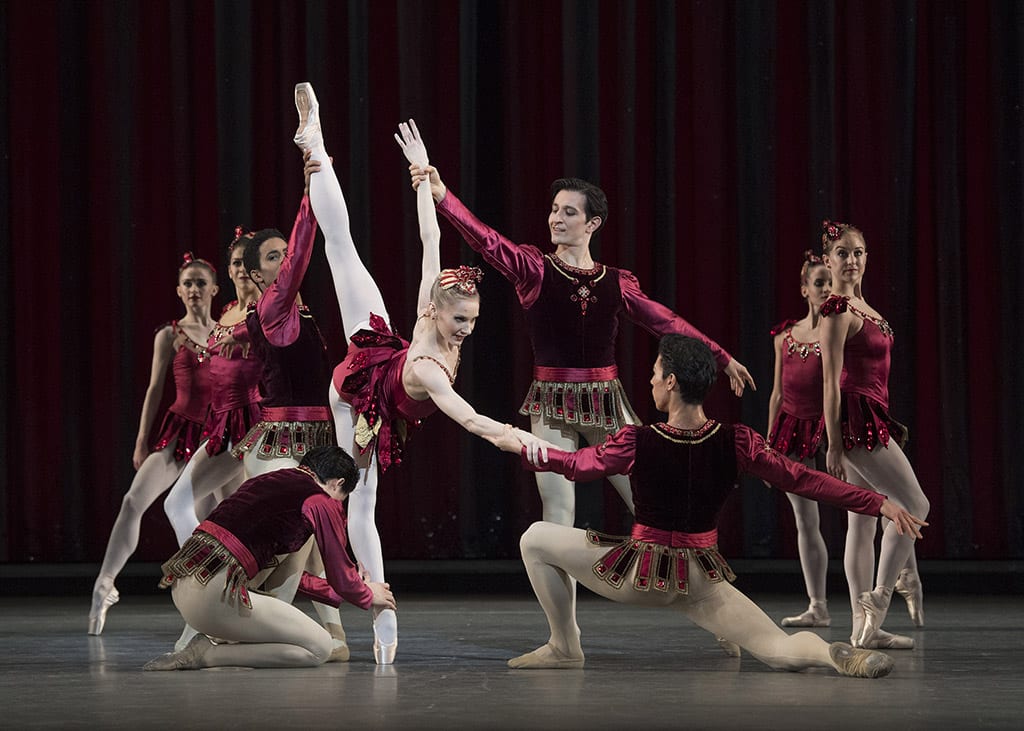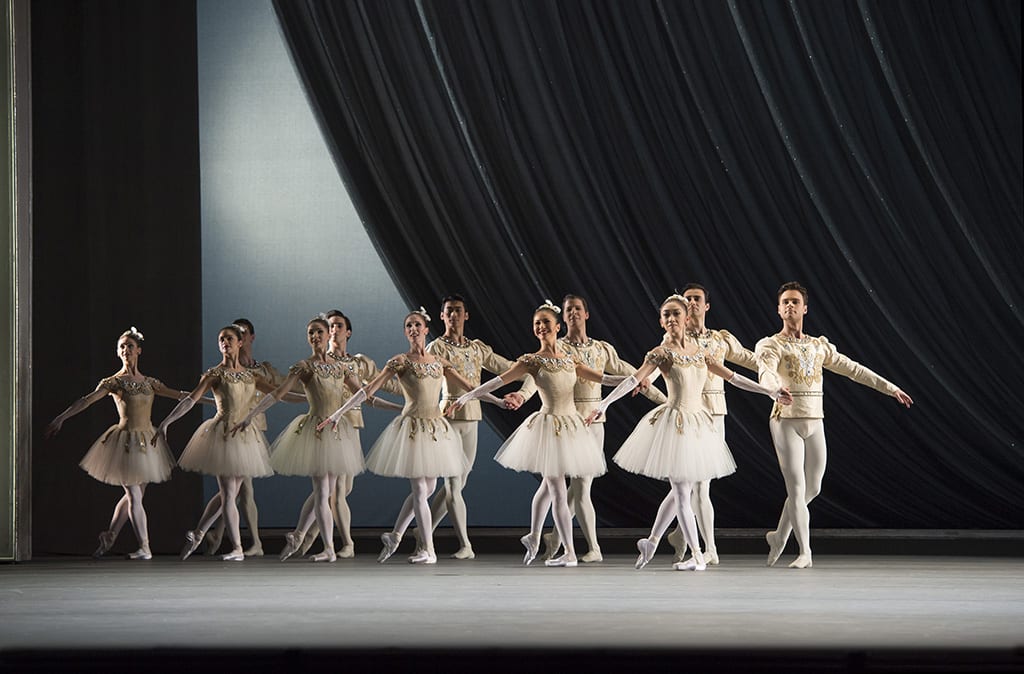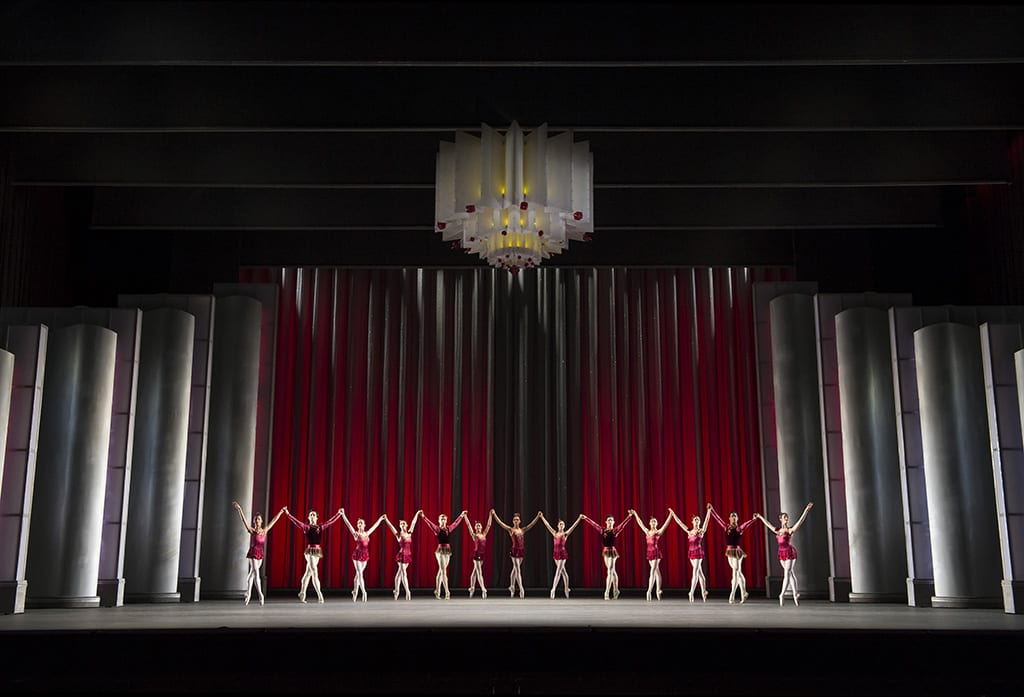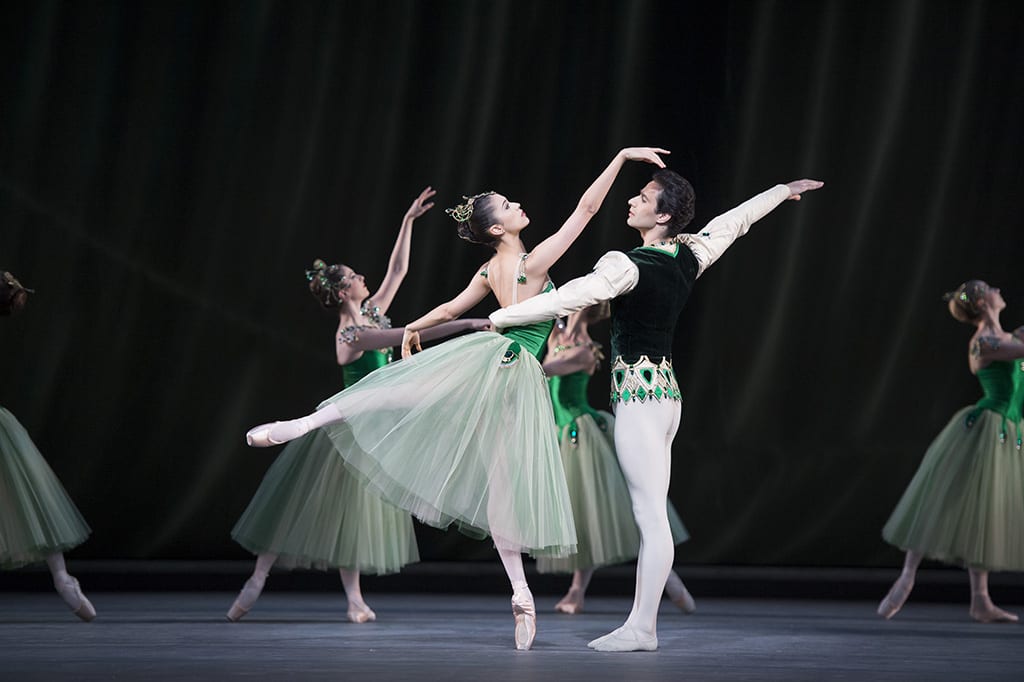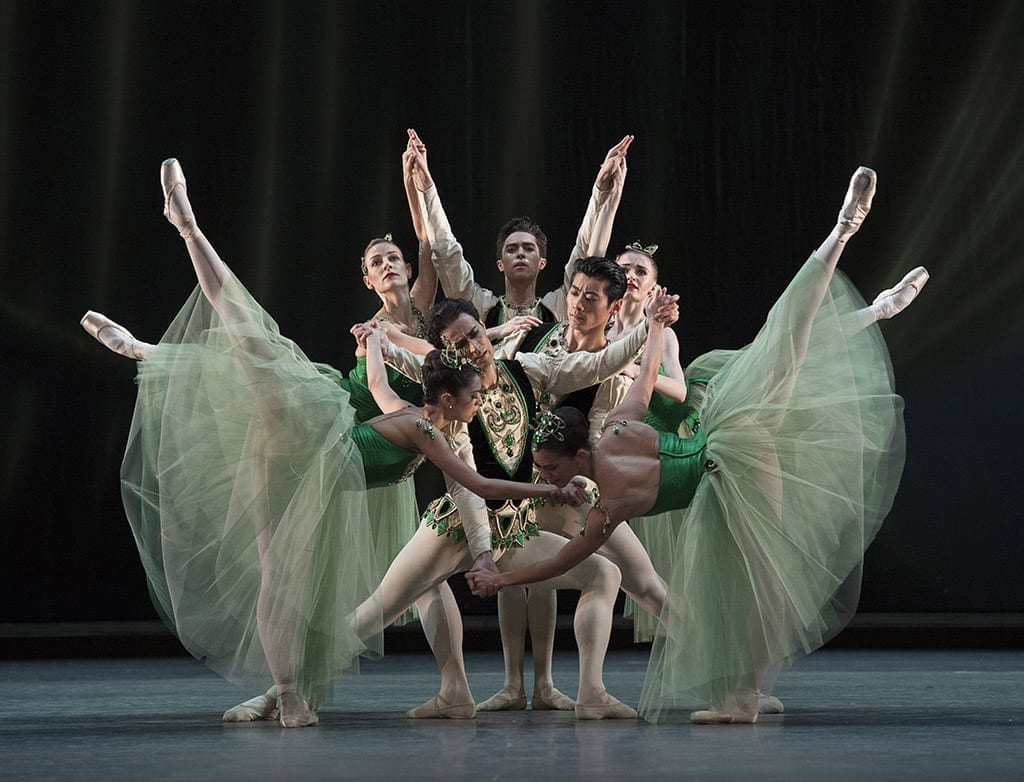With Jewels, George Balanchine gives the Royal Opera House three cleverly varied ballets; Emeralds (to Gabriel Fauré), Rubies (to Igor Stravisky) and Diamonds (to Pytor Il’yich Tchaikovsky) sparkled by the beauty of Van Cleef & Arpels’ precious stones embroidered on the dancers’ costumes.
The 50-year-old show gives us a glimpse at the evolution of costumes and style over time and space, from the long tutus of the 19th century and more classical approach in Emeralds, to the short Russians flashy short tutus in Rubies and the 20th century white practice leotards in Diamonds.
Emeralds has dancers covered in shimmering jewellery, twirling around, dancing on pointe and swiftly leaping in the air as if the dancers were lighter than the tulle of their green dresses. With a perfect mix of ensembles, trios, duos and solos mixing both male and female dancers, Gabriel Fauré’s composition goes in crescendo, leading us towards a remarkable energetic double duo and trio where the ensemble swiftly exchanges partners.
However, the décor of fake velvet, lousy plastic chandeliers, bendable transparent buildings come as a disgrace to the beauty of the Royal Opera House. A strong contrast with the venue’s majestic heavy curtain, sumptuous red chandeliers and golden angel sculptures.
George Balanchine, the choreographer, has a particular geometrical approach, shaping and reshaping various forms while the dancers hold hands in both Emeralds and Diamonds.
The second act of the trilogy, Rubies, accompanied by a violent jazz by is much more electric. This time everything revolves around one dancer, almost like a cabaret performance. You can hear the rubies clinking, as the short red dresses of the female dancers fly around. Stravisky’s piano accelerates the performance, setting the cheerful pace.
The performance quickly becomes folkloric, with women dancing in odd postures followed by lines of dancers executing Russian cancan before finishing off with a quartet of men, also covered in stones, jogging in circles.
It would almost be laughable, if it were not so well executed and intertwined with sophisticated attitudes.
With Diamonds, Balanchine returns to a much needed classical choreography. With powerful duos coming and going, dancers pull away from each other and beautifully reunite in the tense atmosphere of Tchaikovsky’s violins. The duo ends with a tender kiss of hand. Following a vibrant quartet accompanied by flute, comes an incredible staggering male duo followed by a breath-taking male solo.

